- Home
- J. R. R. Tolkien
Beren and Lúthien
Beren and Lúthien Read online
First U.S. Edition
All texts and materials by J.R.R. Tolkien © The Tolkien Estate Limited 2017
Preface, Notes and all other materials © C.R. Tolkien 2017
Illustrations, including cover, © Alan Lee 2017
Cover layout design © HarperCollinsPublishers Ltd 2017
All rights reserved
For information about permission to reproduce selections from this book, write to [email protected] or to Permissions, Houghton Mifflin Harcourt Publishing Company, 3 Park Avenue, 19th Floor, New York, New York 10016.
www.hmhco.com
® and “Tolkien,”® “Beren”® and “Lúthien,”® are registered trademarks of The Tolkien Estate Limited
First published by HarperCollinsPublishers 2017
Library of Congress Cataloging-in-Publication Data is available.
ISBN 978-1-328-79182-5
eISBN 978-1-328-78486-5
v1.0517
For Baillie
Contents
* * *
Cover
Title Page
Copyright
Dedication
List of Plates
Preface
Notes on the Elder Days
BEREN AND LÚTHIEN
The Tale of Tinúviel
A Passage from the ‘Sketch of the Mythology’
A Passage Extracted from The Lay of Leithian
The Quenta Noldorinwa
A Passage Extracted from the Quenta
A Second Extract from The Lay of Leithian
A Further Extract from the Quenta
The Narrative in The Lay of Leithian to Its Termination
The Quenta Silmarillion
The Return of Beren and Lúthien According to the Quenta Noldorinwa
Extract from the Lost Tale of the Nauglafring
The Morning and Evening Star
Appendix: Revisions to The Lay of Leithian
Footnotes
List of Names
Glossary
Read More from J.R.R. Tolkien
About the Author and Editor
PLATES
‘yet now did he see Tinúviel dancing in the twilight’
‘but Tevildo caught sight of her where she was perched’
‘no leaves they had, but ravens dark / sat thick as leaves on bough and bark’
‘Now ringed about with wolves they stand, / and fear their doom.’
‘Then the brothers rode off, but shot back at Huan treacherously’
‘On the bridge of woe / in mantle wrapped at dead of night / she sat and sang’
‘now down there swooped / Thorondor the King of Eagles, stooped’
‘fluttering before his eyes, she wound / a mazy-wingéd dance’
“Surely that is a Silmaril that shines now in the West?”
PREFACE
After the publication of The Silmarillion in 1977 I spent several years investigating the earlier history of the work, and writing a book which I called The History of The Silmarillion. Later this became the (somewhat shortened) basis of the earlier volumes of The History of Middle-earth.
In 1981 I wrote at length to Rayner Unwin, the chairman of Allen and Unwin, giving him an account of what I had been, and was still, doing. At that time, as I informed him, the book was 1,968 pages long and sixteen and a half inches across, and obviously not for publication. I said to him: ‘If and/or when you see this book, you will perceive immediately why I have said that it is in no conceivable way publishable. The textual and other discussions are far too detailed and minute; the size of it is (and will become progressively more so) prohibitive. It is done partly for my own satisfaction in getting things right, and because I wanted to know how the whole conception did in reality evolve from the earliest origins . . .
‘If there is a future for such enquiries, I want to make as sure as I can that any later research into JRRT’s “literary history” is not turned into a nonsense by mistaking the actual course of its evolution. The chaos and intrinsic difficulty of many of the papers (the layer upon layer of changes in a single manuscript page, the vital clues on scattered scraps found anywhere in the archive, the texts written on the backs of other works, the disordering and separation of manuscripts, the near or total illegibility in places, is simply inexaggerable . . .
‘In theory, I could produce a lot of books out of the History, and there are many possibilities and combinations of possibilities. For example, I could do “Beren”, with the original Lost Tale*, The Lay of Leithian, and an essay on the development of the legend. My preference, if it came to anything so positive, would probably be for the treating of one legend as a developing entity, rather than to give all the Lost Tales at one go; but the difficulties of exposition in detail would in such a case be great, because one would have to explain so often what was happening elsewhere, in other unpublished writings.’
I said that I would enjoy writing a book called ‘Beren’ on the lines I suggested: but ‘the problem would be its organisation, so that the matter was comprehensible without the editor becoming overpowering.’
When I wrote this I meant what I said about publication: I had no thought of its possibility, other than my idea of selecting a single legend ‘as a developing entity’. I seem now to have done precisely that—though with no thought of what I had said in my letter to Rayner Unwin thirty-five years ago: I had altogether forgotten it, until I came on it by chance when this book was all but completed.
There is however a substantial difference between it and my original idea, which is a difference of context. Since then, a large part of the immense store of manuscripts pertaining to the First Age, or Elder Days, has been published, in close and detailed editions: chiefly in volumes of The History of Middle-earth. The idea of a book devoted to the evolving story of ‘Beren’ that I ventured to mention to Rayner Unwin as a possible publication would have brought to light much hitherto unknown and unavailable writing. But this book does not offer a single page of original and unpublished work. What then is the need, now, for such a book?
I will attempt to provide an (inevitably complex) answer, or several answers. In the first place, an aspect of those editions was the presentation of the texts in a way that adequately displayed my father’s apparently eccentric mode of composition (often in fact imposed by external pressures), and so to discover the sequence of stages in the development of a narrative, and to justify my interpretation of the evidence.
At the same time, the First Age in The History of Middle-earth was in those books conceived as a history in two senses. It was indeed a history—a chronicle of lives and events in Middle-earth; but it was also a history of the changing literary conceptions in the passing years; and therefore the story of Beren and Lúthien is spread over many years and several books. Moreover, since that story became entangled with the slowly evolving ‘Silmarillion’, and ultimately an essential part of it, its developments are recorded in successive manuscripts primarily concerned with the whole history of the Elder Days.
To follow the story of Beren and Lúthien, as a single and well-defined narrative, in The History of Middle-earth is therefore not easy.
In an often quoted letter of 1951 my father called it ‘the chief of the stories of the Silmarillion’, and he said of Beren that he is ‘the outlawed mortal who succeeds (with the help of Lúthien, a mere maiden even if an elf of royalty) where all the armies and warriors have failed: he penetrates the stronghold of the Enemy and wrests one of the Silmarilli from the Iron Crown. Thus he wins the hand of Lúthien and the first marriage of mortal and immortal is achieved.
‘As such the story is (I think a beautiful and powerful) heroic-fairy-romance, receivable in itself with only a very general vague knowledge of the
background. But it is also a fundamental link in the cycle, deprived of its full significance out of its place therein.’
In the second place, my purpose in this book is twofold. On the one hand I have tried to separate the story of Beren and Tinúviel (Lúthien) so that it stands alone, so far as that can be done (in my opinion) without distortion. On the other hand, I have wished to show how this fundamental story evolved over the years. In my foreword to the first volume of The Book of Lost Tales I said of the changes in the stories:
In the history of the history of Middle-earth the development was seldom by outright rejection—far more often it was by subtle transformation in stages, so that the growth of the legends (the process, for instance, by which the Nargothrond story made contact with that of Beren and Lúthien, a contact not even hinted at in the Lost Tales, though both elements were present) can seem like the growth of legends among peoples, the product of many minds and generations.
It is an essential feature of this book that these developments in the legend of Beren and Lúthien are shown in my father’s own words, for the method that I have employed is the extraction of passages from much longer manuscripts in prose or verse written over many years.
In this way, also, there are brought to light passages of close description or dramatic immediacy that are lost in the summary, condensed manner characteristic of so much Silmarillion narrative writing; there are even to be discovered elements in the story that were later altogether lost. Thus, for example, the cross-examination of Beren and Felagund and their companions, disguised as Orcs, by Thû the Necromancer (the first appearance of Sauron), or the entry into the story of the appalling Tevildo, Prince of Cats, who clearly deserves to be remembered, short as was his literary life.
Lastly, I will cite another of my prefaces, that to The Children of Húrin (2007):
It is undeniable that there are a great many readers of The Lord of the Rings for whom the legends of the Elder Days are altogether unknown, unless by their repute as strange and inaccessible in mode and manner.
It is also undeniable that the volumes of The History of Middle-earth in question may well present a deterrent aspect. This is because my father’s mode of composition was intrinsically difficult: and a primary purpose of the History was to try to disentangle it: thereby (it may seem) exhibiting the tales of the Elder Days as a creation of unceasing fluidity.
I believe that he might have said, in explanation of some rejected element in a tale: I came to see that it was not like that; or, I realised that that was not the right name. The fluidity should not be exaggerated: there were nonetheless great, essential, permanences. But it was certainly my hope, in composing this book, that it would show how the creation of an ancient legend of Middle-earth, changing and growing over many years, reflected the search of the author for a presentation of the myth nearer to his desire.
In my letter to Rayner Unwin of 1981 I observed that in the event of my restricting myself to a single legend from among the legends that make up the Lost Tales ‘the difficulties of exposition in detail would in such a case be great, because one would have to explain so often what was happening elsewhere, in other unpublished writings’. This has proved an accurate prediction in the case of Beren and Lúthien. A solution of some sort must be achieved, for Beren and Lúthien did not live, love, and die, with their friends and foes, on an empty stage, alone and with no past. I have therefore followed my own solution in The Children of Húrin. In my preface to that book I wrote:
It seems unquestionable, from my father’s own words, that if he could achieve final and finished narratives on the scale he desired, he saw three ‘Great Tales’ of the Elder Days (Beren and Lúthien, the Children of Húrin, and the Fall of Gondolin) as works sufficiently complete in themselves as not to demand knowledge of the great body of legend known as The Silmarillion. On the other hand . . . the tale of the Children of Húrin is integral to the history of Elves and Men in the Elder Days, and there are necessarily a good many references to events and circumstances in that larger story.
I therefore gave ‘a very brief sketch of Beleriand and its peoples near the end of the Elder Days’, and I included ‘a list of all names occurring in the texts with very concise indications concerning each.’ In this book I have adopted from The Children of Húrin that brief sketch, adapting and shortening it, and I have likewise provided a list of all names occurring in the texts, in this case with explanatory indications of a very varied nature. None of this ancillary matter is essential, but is intended merely as an assistance if desired.
A further problem which I should mention arose from the very frequent changes of names. To follow with exactness and consistency the succession of names in texts of different dates would not serve the purpose of this book. I have therefore observed no rule in this respect, but distinguished old and new in some cases but not in others, for various reasons. In a great many cases my father would alter a name in a manuscript at some later, or even much later, time, but not consistently: for example, Elfin to Elven. In such cases I have made Elven the sole form, or Beleriand for earlier Broseliand; but in others I have retained both, as in Tinwelint/Thingol, Artanor/Doriath.
The purpose of this book, then, is altogether different from that of the volumes of The History of Middle-earth from which it is derived. It is emphatically not intended as an adjunct to those books. It is an attempt to extract one narrative element from a vast work of extraordinary richness and complexity; but that narrative, the story of Beren and Lúthien, was itself continually evolving, and developing new associations as it became more embedded in the wider history. The decision of what to include and what to exclude of that ancient world ‘at large’ could only be a matter of personal and often questionable judgement: in such an attempt there can be no attainable ‘correct way’. In general, however, I have erred on the side of clarity, and resisted the urge to explain, for fear of undermining the primary purpose and method of the book.
In my ninety-third year this is (presumptively) my last book in the long series of editions of my father’s writings, very largely previously unpublished, and is of a somewhat curious nature. This tale is chosen in memoriam because of its deeply-rooted presence in his own life, and his intense thought on the union of Lúthien, whom he called ‘the greatest of the Eldar’, and of Beren the mortal man, of their fates, and of their second lives.
It goes back a long way in my life, for it is my earliest actual recollection of some element in a story that was being told to me—not simply a remembered image of the scene of the storytelling. My father told it to me, or parts of it, speaking it without any writing, in the early 1930s.
The element in the story that I recall, in my mind’s eye, is that of the eyes of the wolves as they appeared one by one in the darkness of the dungeon of Thû.
In a letter to me on the subject of my mother, written in the year after her death, which was also the year before his own, he wrote of his overwhelming sense of bereavement, and of his wish to have Lúthien inscribed beneath her name on the grave. He returned in that letter, as in that cited on p. 29 of this book, to the origin of the tale of Beren and Lúthien in a small woodland glade filled with hemlock flowers near Roos in Yorkshire, where she danced; and he said: ‘But the story has gone crooked, and I am left, and I cannot plead before the inexorable Mandos.’
NOTES ON THE ELDER DAYS
The depth in time to which this story reaches back was memorably conveyed in a passage in The Lord of the Rings. At the great council in Rivendell Elrond spoke of the Last Alliance of Elves and Men and the defeat of Sauron at the end of the Second Age, more than three thousand years before:
Thereupon Elrond paused a while and sighed. ‘I remember well the splendour of their banners,’ he said. ‘It recalled to me the glory of the Elder Days and the hosts of Beleriand, so many great princes and captains were assembled. And yet not so many, nor so fair, as when Thangorodrim was broken, and the Elves deemed that evil was ended for ever, and it was not so.’<
br />
‘You remember?’ said Frodo, speaking his thought aloud in his astonishment. ‘But I thought,’ he stammered as Elrond turned towards him, ‘I thought that the fall of Gil-galad was a long age ago.’
‘So it was indeed,’ answered Elrond gravely. ‘But my memory reaches back even to the Elder Days. Eärendil was my sire, who was born in Gondolin before its fall; and my mother was Elwing, daughter of Dior, son of Lúthien of Doriath. I have seen three ages in the West of the world, and many defeats, and many fruitless victories.’
Of Morgoth
Morgoth, the Black Enemy, as he came to be called, was in his origin, as he declared to Húrin brought captive before him, ‘Melkor, first and mightiest of the Valar, who was before the world.’ Now become permanently incarnate, in form a gigantic and majestic, but terrible, King in the north-west of Middle-earth, he was physically present in his huge fortress of Angband, the Hells of Iron: the black reek that issued from the summits of Thangorodrim, the mountains that he piled above Angband, could be seen far off staining the northern sky. It is said in the Annals of Beleriand that ‘the gates of Morgoth were but one hundred and fifty leagues from the bridge of Menegroth; far and yet all too near.’ These words refer to the bridge leading to the dwellings of the Elvish king Thingol; they were called Menegroth, the Thousand Caves.
But being incarnate Morgoth was afraid. My father wrote of him:
‘As he grew in malice, and sent forth from himself the evil that he conceived in lies and creatures of wickedness, his power passed into them and was dispersed, and he himself became ever more earth-bound, unwilling to issue from his dark strongholds.’ Thus when Fingolfin, High King of the Noldorin Elves rode alone to Angband to challenge Morgoth to combat, he cried at the gate: Come forth, thou coward king, to fight with thine own hand! Den-dweller, wielder of thralls, liar and lurker, foe of Gods and Elves, come! For I would see thy craven face. Then (it is told) Morgoth came. For he could not refuse such a challenge before the face of his captains. He fought with the great hammer Grond, which at each blow made a great pit, and he beat Fingolfin to the ground; but as he died he pinned the great foot of Morgoth to the earth, and the black blood gushed forth and filled the pits of Grond. Morgoth went ever halt thereafter. So also, when Beren and Lúthien made their way into the deepest hall in Angband where Morgoth sat, Lúthien cast a spell on him; and suddenly he fell, as a hill sliding in avalanche, and hurled like thunder from his throne lay prone upon the floors of hell.

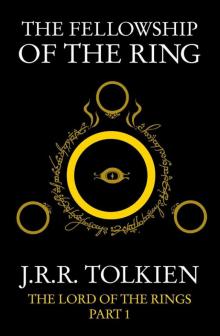 The Fellowship of the Ring
The Fellowship of the Ring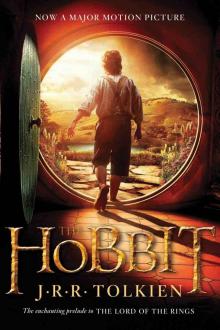 The Hobbit
The Hobbit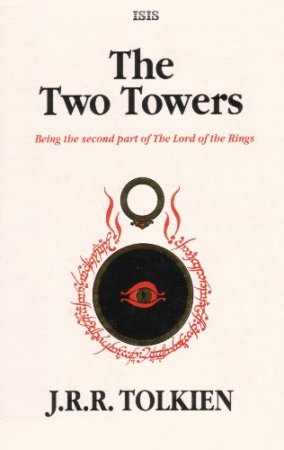 The Two Towers
The Two Towers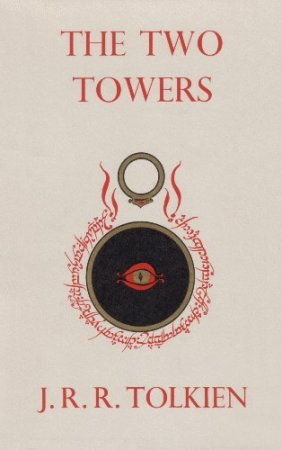 The Return of the King
The Return of the King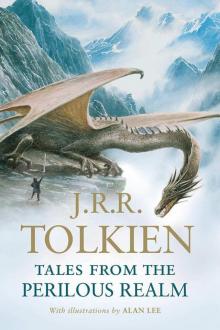 Tales From the Perilous Realm
Tales From the Perilous Realm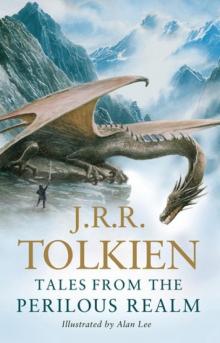 Leaf by Niggle
Leaf by Niggle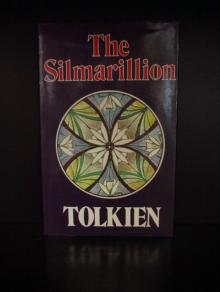 The Silmarillon
The Silmarillon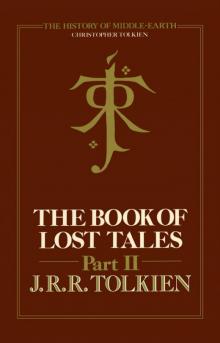 The Book of Lost Tales, Part Two
The Book of Lost Tales, Part Two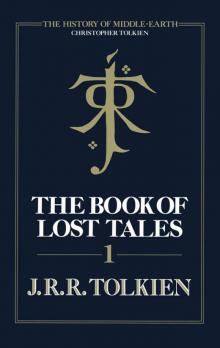 The Book of Lost Tales, Part One
The Book of Lost Tales, Part One The Book of Lost Tales 2
The Book of Lost Tales 2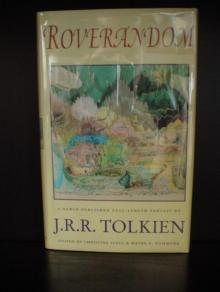 Roverandom
Roverandom Smith of Wootton Major
Smith of Wootton Major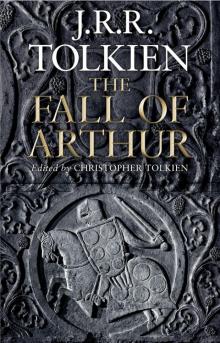 The Fall of Arthur
The Fall of Arthur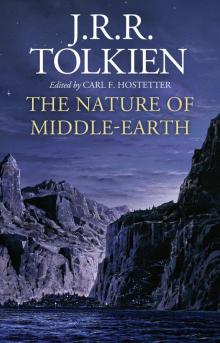 The Nature of Middle-earth
The Nature of Middle-earth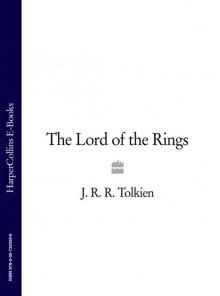 The Lord of the Rings: The Fellowship of the Ring, The Two Towers, The Return of the King
The Lord of the Rings: The Fellowship of the Ring, The Two Towers, The Return of the King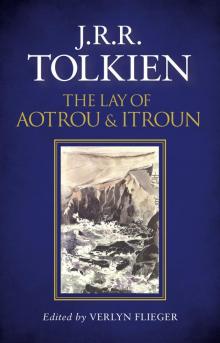 The Lay of Aotrou and Itroun
The Lay of Aotrou and Itroun lord_rings.qxd
lord_rings.qxd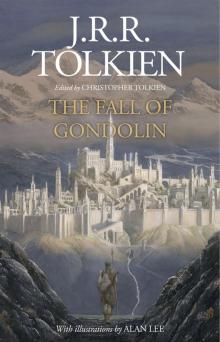 The Fall of Gondolin
The Fall of Gondolin The Book of Lost Tales, Part 1
The Book of Lost Tales, Part 1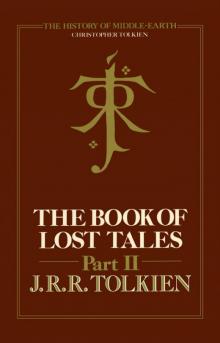 The Book of Lost Tales, Part 2
The Book of Lost Tales, Part 2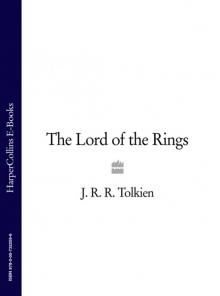 The Lord of the Rings
The Lord of the Rings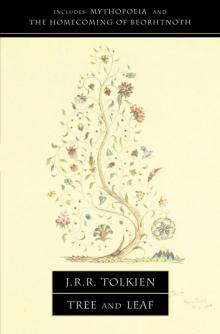 Tree and Leaf
Tree and Leaf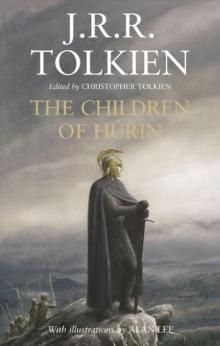 The Children of Húrin
The Children of Húrin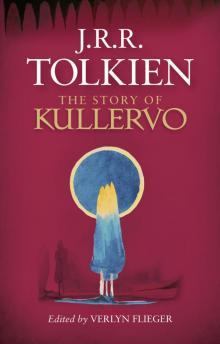 The Story of Kullervo
The Story of Kullervo Letters From Father Christmas
Letters From Father Christmas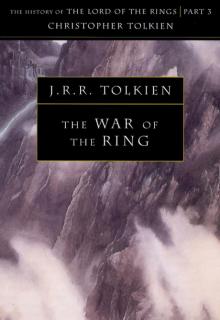 The History of Middle Earth: Volume 8 - The War of the Ring
The History of Middle Earth: Volume 8 - The War of the Ring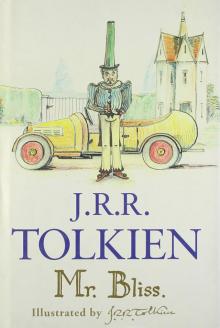 Mr. Bliss
Mr. Bliss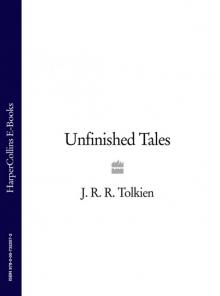 Unfinished Tales
Unfinished Tales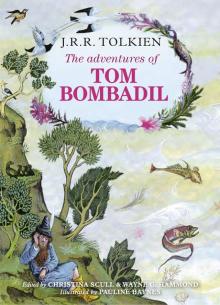 The Adventures of Tom Bombadil
The Adventures of Tom Bombadil Beowulf: A Translation and Commentary, together with Sellic Spell
Beowulf: A Translation and Commentary, together with Sellic Spell The Silmarillion
The Silmarillion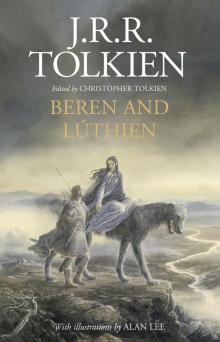 Beren and Lúthien
Beren and Lúthien